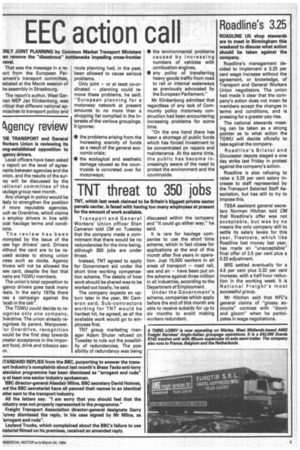EEC action call
Page 7

If you've noticed an error in this article please click here to report it so we can fix it.
OILY JOINT PLANNING by Common Market Transport Ministers an remove the "disastrous" bottlenecks impeding cross-frontier ravel.
That was the message in a report from the European Parlament's transport committee, lebated at the March session of he assembly in Strasbourg.
The report's author, West Gernan MEP Jan Kiinkenborg, was :ritical that different national ap'roaches to transport policy and route planning had, in the past, been allowed to cause serious problems.
Only joint — or at least co-ordinated — planning could remove these problems, he said. "European planning for a motorway network at present amounts to no more than a shopping list compiled in the interests of the various groupings. It ignores: • the problems arising from the increasing scarcity of funds as a result of the general economic crisis; • the ecological and aesthetic damage caused as the countryside is concreted over for motorways; • the environmental problems caused by increasing numbers of vehicles with combustion engines, • any policy of transferring heavy goods traffic from road to rail or internal waterways as previously advocated by the European Parliament."
Mr Klinkenborg admitted that regardless of any lack of Community policy motorway construction had been encountering increasing problems for some time.
"On the one hand there has been a shortage of public funds which has forced investment to be concentrated on repairs and maintenance. At the same time, the public has become increasingly aware of the need to protect the environment and the countryside.
























































































